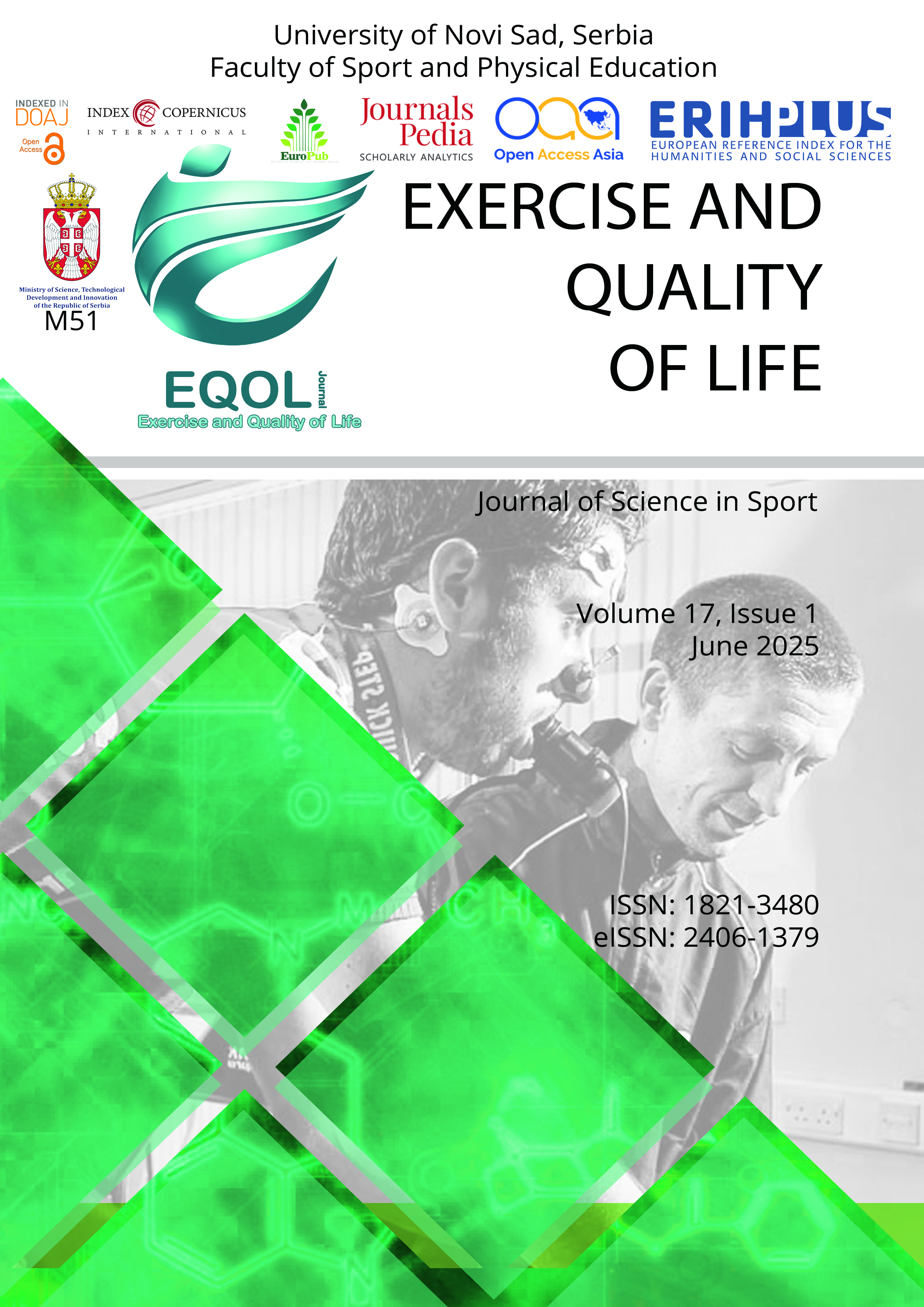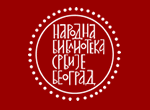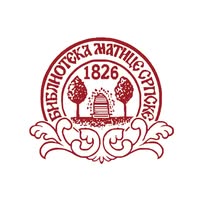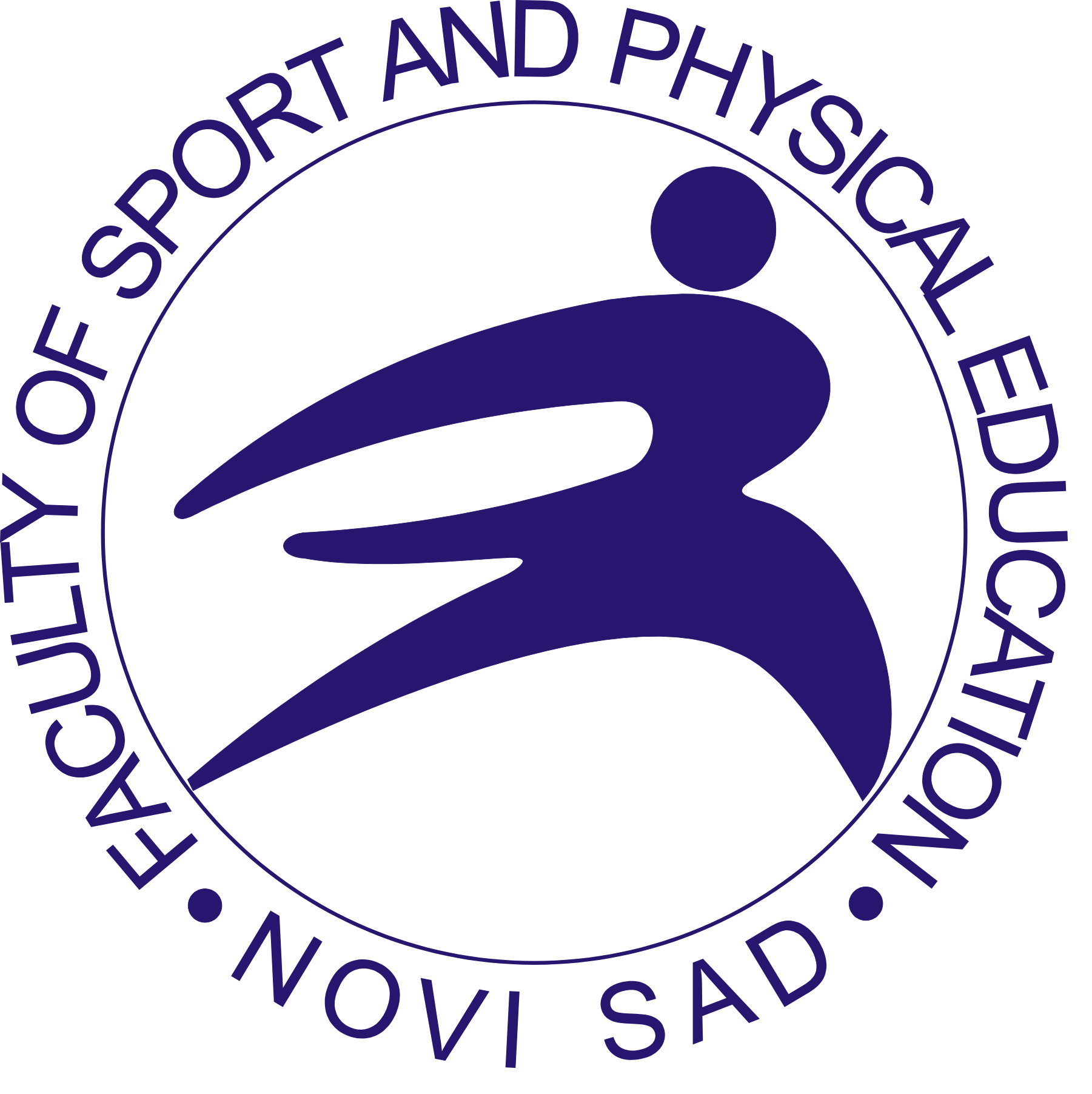Current issue

Volume 17, Issue 1, 2025
Online ISSN: 2406-1379
ISSN: 1821-3480
Volume 17 , Issue 1, (2025)
Published: 15.06.2025.
Open Access
All issues
Contents
15.06.2018.
Original scientific paper
Health-related fitness in preschool children: Difference between organized and unorganized physical activity
The aim of this research was to determine the differences in health-related fitness between preschool children involved in organized and unorganized physical activities. This study was performed on a sample of 220 healthy preschool children that were divided into two groups, organized physical activity group (N=99) and unorganized physical activity group (N=121). Beside the set of anthropometric variables children were tested for Standing broad jump, Classic sitand-reach test, Bent arm hang, Sit-ups in 30 seconds and Handgrip strength test. The t-test applied to determine differences between anthropometric characteristic revealed differences for almost all variables (p≤0.05). Moreover, the organized physical activity group showed better results in all fitness variables compared to unorganized group (p≤0.01). It can be concluded that the developmental gymnastics program has influence on improvement of health-related fitness in preschool children.
Dragana Zarić, Zoran Gojković, Goran Sporiš, Dejan Madić
15.06.2017.
Original scientific paper
Effects of invasion games on physical fitness in primary school children
Studies concerning the effects of different invasion games on physical fitness in school children are scarce. Consequently, the purpose of this study was to examine the effects of the application of invasion games on physical fitness in primary school children. A total of 62 primary school children aged 10-12 years voluntarily participated in this study. They were divided into experimental (32) and control (30) group. Physical fitness of children was estimated by the following tests: Standing broad jump, Vertical jump, Bent-arm hang, Sit-ups, Push- ups, Medicine ball test and Andersen test. The experimental group had twice per week invasion games on non-consecutive days for 12 weeks. Participants in control group did not perform specific program but attended their regular PE class twice per week. Compared with initial measurement, there was a significant (p < 0.05) improvement in vertical jump test for both groups. Furthermore, the group that participated in the invasion games program made significantly greater gains compared to the control group (p < 0.05) in Standing broad jump (8.2%; ES=0.56 vs. 3%; ES=0.2) and Medicine ball test (8.2%; ES=0.6 vs. 3%; ES=0.3). There was a significant improvement in bent arm hang, sit ups and push-ups in experimental group. Compared with initial measurement, there was a significant (p < 0.05) improvement in Andersen test in invasion games group, which was not the case with control group (p>0.05). To conclude, invasion games were an effective way of improving physical fitness in primary school children, because the results of this study indicate that this method was more effective for physical fitness than traditional school program.
Irena Valantine, Dejan Madić, Goran Sporiš
02.12.2015.
Original scientific paper
THE EFFECTS OF LIVE AND VIDEO DEMONSTRATION ON THE EARLY ACQUISITION OF A NEW MOTOR TASK
Demonstration is a widely used method in sports teaching and coaching, as well in Physical
education classes. The most commonly used types of demonstration live demonstration and
video demonstration. However, a direct comparison between these two types of model has
rarely been undertaken in a motor context. Therefore, the aim of this reseasrch is to specify
and compare the effects of the two different metric protocol, former standard and the new
video demonstration, on the estimation of the test results in the primary school.The
participants involved the third and the fourth year students from four elementary schools in
Petrinje and Sisak which territorialy belong to urban area of the Sisak- Moslavic county. The
total number of students on whom this research has taken place was 327, of which 186 were
boys and 141 were girls at the age of 10,5. The students were divided into two subsamples
considering the used treatment,both standard and video demonstration protocol. The sample
of variables in this research consists of four tests for evauating motor abilities: Shuttle run,
Back-save sit and reach for the right and left leg, Push-ups and Curl up. The use of video
demonstration protocol for task performance has shown a significant effect in the tests
Shuttle run and Curl up, while significant effects were not gained in both both flexibility tests
(Back-save sit and reach for the right and left leg) and strength tests (push-ups) due to the
protocol. The results indicated that video demonstration seems more effective than the live
one for the early acquisition of a completely new motor skills.
Ivan Vrbik, Tomislav Krističević, Goran Sporiš, Dejan Madić























